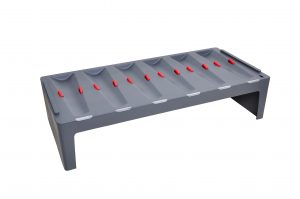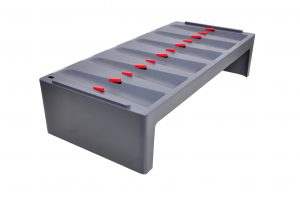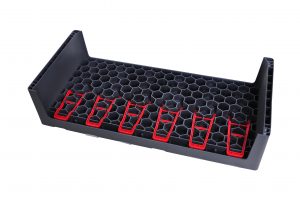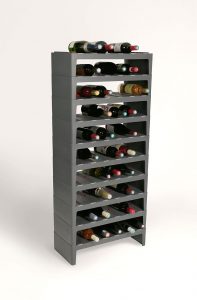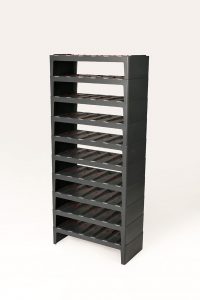Prototyping of connected objects for the wine and spirits sector
Caveasy is a startup company that invented a system to optimize the storage of wine bottles. This is bottle storage linked to a mobile application. As a specialist in rapid prototyping, Prototech Asia won the call for tenders to implement the prototyping phase.
The prototype product
It related to the storage of bottles linked to a mobile application. This allows several functionalities, simplifying the management of stocks in a wine cellar. The object consists of 4 parts: tray, rocker, hood and light guide. We were asked to make prototypes for 10 complete objects. We, therefore, produced 10 trays, 10 hoods, 60 rockers, and 60 light guides. The prototypes were used to validate the functionality and visual appearance of the parts before moving to the industrialization phase.
Challenges of the prototyping project
The prototyping project involved several technical difficulties:
- The 3D file of the part did not take into account the thickness of the paint: It was necessary to avoid an overcoat of paint on the moving parts of the object, especially the axis of the rocker.
- The rocker had to be clipped to the plate while preserving the axis of rotation: we validated this point on the prototype part
- The positioning of the rocker had to be free and without hindrances to movement: The rocker had to fall under its own weight to indicate to the electronic sensor whether a bottle was in place or not.
- Regarding the mirror polishing of the light guide, it was necessary to maintain a sufficiently broad diffusing appearance on the outgoing part of the plate: We created a mirror polishing finish on the outside of the prototype part and a dull treatment on the inside to obtain a semi-transparent effect.

In blue, the side with mirror polishing finishing. The rest of the part was made with a sandblasting finishing.
Validation of the prototyping project
After numerous discussions with Caveasy on the main points of the specifications, we jointly selected the technologies, materials, and finishes suitable for the prototyping of the parts:
- Rockers: PU similar to ABS with vacuum casting. Mass dyed RAL finish, design 030 40 60.
- Hoods: ABS with CNC machining. RAL paint finish, design 000 25 00.
- Trays: PU similar to ABS with vacuum casting. Mass dyed RAL finish, design 000 25 00.
- Light guides: PU similar to PC with vacuum casting. Mirror polishing on one half of the part and sandblasted finish on the other part.
The silicone molding seemed to be suitable for all parts except the hoods. Their large size was a constraint, so we turned to another production process, CNC machining. (Learn about the advantages of CNC machining here.)
Final product prototype
Caveasy assembled the objects and set up the electronic components. The prototypes received a very positive assessment after receipt. In fact, the parts were functional and the finishes satisfied the customer’s expectations completely.
Prototype parts assembled with and without bottles:
You can visit the Caveasy site here.


